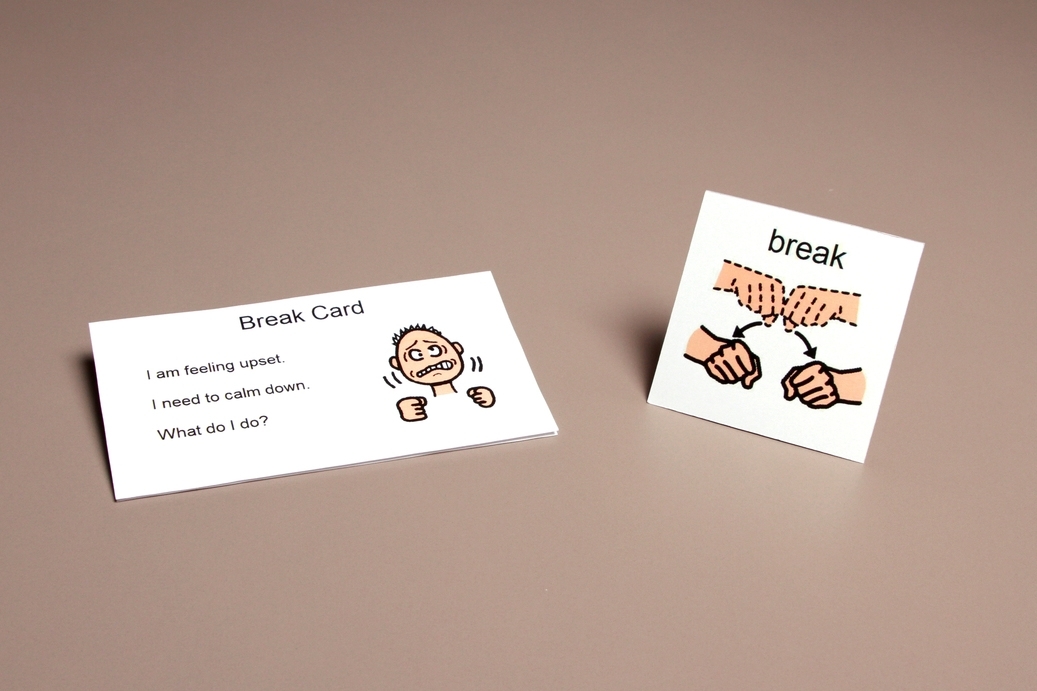
Break Card
Break Card
Here is an example of a break card made with Boardmaker.
When to use:
- Use when working on a task with a student who needs, but may not ask for, a break.
- Use when working with a student who gets easily frustrated, bored, or anxious.
- Students can use to show they need time away from a person, task, or environment (e.g., the lunch room because it’s too crowded or loud).
- Break cards can be a part of a token board, behavior chart, or symbol communication system.
Tip: Allow the student to take breaks that focus or calm them. They may choose to go to a cool down space for their break or use a calming sensory device.
How to use:
The student can use the card to ask for a break by:
- touching or pointing to the card.
- handing the card to the teacher.
- placing the card on a marked spot on the desk or a token board.
- holding the card up.
When the student asks for a break in any of these ways, model saying “I need a break.” or “Break, please.”
Teaching the Initial Use of a Break Card
- It’s important to help the student realize when they need to use the break card before they get too upset or off-task. Before beginning an activity or task, show the student the break card and place the card where they can easily reach it.
- Tell them, “This is your break card. You can use it to ask for a break.” When the student starts to get upset or off-task, tell them, “You seem upset. Use your break card to tell me you need a break.”
- Immediately allow the student to take a break from the task. Allowing the student to go on a break when they request it is an important part of teaching the student to trust and use the visual support.
- After the student is consistently asking for breaks, you may begin to extend the time between the request and the actual break. Eventually, you may impose additional requirements or defer the break to a later time.
Tip: Help the student make connections between their own body language and behavior and the need for a break. You can say, for example, “I see that you are rubbing your head and frowning. You can ask for a break when you start to feel upset.”
Variations:
- A "Help" card can get a student the help they need to keep them from getting too frustrated with a task and needing a break. Teach students to use a help card in addition to a break card to reduce the number of times a student asks for a break.
- If needed, a break signal can be something other than a card, such as placing a water bottle on the edge of the desk.
